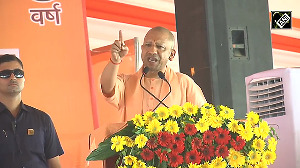A young couple sharing a laugh — in the living room over a Polish joke book, on the beach, in the rain — with the tagline, “Made for each other”, hung from billboards at prominent street corners from the 1960s to the 1990s.

It was a campaign for one of the largest selling cigarette brands in India, Wills (Navy Cut) from the ITC stable, that resonated with a generation of smokers and non-smokers alike till the curtains came down on tobacco advertising in 2004.
As we prepare to welcome 2024, ITC has metamorphosed from a tobacco giant into a conglomerate straddling multiple large-sized businesses. In the mind space of Gen Z or millennials, the company represents a gamut of branded products — from frozen food (ITC Master Chef), noodles (YiPPee!), and cookies (Sunfeast) to snacks (Bingo!) and notebooks (Classmate), and so on and so forth.
But Rome was not built in a day, and nor was a diversified ITC.
The threat of regulations on the tobacco industry had been looming large the world over.
As the market leader in cigarettes in India, ITC read the warning signs early and hedged its bets.
“Our entire DNA for FMCG has been innovation,” says B Sumant, executive director, ITC.
FMCG is short for fast-moving consumer goods.
Atop the food chain
The seeds of diversification were sown by its first Indian chairman, Ajit Narain Haksar, with a hotel in Chennai, the ITC Welcomgroup Hotel Chola in 1975.
Paperboards, the specialty papers arm, came two years later.
But it is the entry into non-tobacco FMCG, powered by the company’s longest-serving chairman, Yogesh Chander Deveshwar, in the early part of 2000s, that holds the highest promise for value creation with an addressable market size of Rs 5 trillion. It is also the largest chunk in ITC’s non-cigarettes basket.
Numbers show that the non-cigarettes business of ITC accounts for about 62 per cent of revenues, based on figures for the first half of the current financial year.
FMCG is at more than 38 per cent of the non-cigarette revenue pie.
Foods dominate the non-cigarettes FMCG play, with a presence in more than 20 categories.
And ITC is currently the country’s largest FMCG company in the foods space by domestic sales, up from fourth last year.
According to Nielsen IQ numbers for the nine-month period ended September 2023, ITC is at Rs 17,100 crore, ahead of Britannia Rs 16,700 crore), Adani Wilmar (Rs 15,900 crore) and Parle (Rs 14,800 crore).
Nielsen declined to comment on company-specific data as per its global policy guidelines.
House of brands
Deveshwar, who died in May 2019, would often refer to ITC as India’s Trademarks Corporation.
In more than two decades of the non-cigarettes FMCG push, the company has managed to build more than 25 mother brands having an annual consumer spend of Rs 29,000 crore.
The largest brand is Aashirvaad, at more than Rs 8,000 crore; Sunfeast is above Rs 5,000 crore and Bingo!, YiPPee!, Mangaldeep, Classmate, and Sunrise are in the Rs 1,000 crore-plus club.
“When we came into FMCG, every single category already had established players,” says Sumant.
In atta, Pillsbury and Annapurna were already there; in the North, Shakti Bhog had a strong presence. How did ITC break into the branded atta space?
“We just focused on delivering the softest chapati possible, because we could come up with right blends with wheat sourced by our agri business,” Sumant explains.

Whether it is sourcing from the agri business or cuisine expertise from hospitality, institutional synergies are ITC’s unique advantage.
“We have been able to leverage the power of synergies, which has contributed immensely to our success,” Sumant adds.
For instance, the culinary expertise of ITC’s hotel chefs helped develop differentiated offerings in the food space.
The 400 scientists-powered Life Sciences and Technology Centre is also a source of immense strength.
All of this enabled ITC to launch a deluge of FMCG products: 300 in the last three years.
Acquisitions had been few and far between for ITC, but got a leg-up in recent years.
Acquisition spree
Sunrise, the big-ticket buy in 2020, has seen an 1,100 basis points (bps) market share gain in West Bengal and 1,000 bps in the Northeast after its acquisition, according to a BNP Paribas report.
Savlon, acquired in 2015, peaked during the Covid-19 pandemic and ventured into a plethora of adjacencies.
The acquisition of B Natural (2015), Charmis (2017), and Nimyle (2018) have marked ITC’s presence in juice, cold cream, and homecare.
ITC’s FMCG portfolio is perhaps the most diversified, says Amnish Aggarwal, head of research at Prabhudas Lilladhar.
“In personal care, it competes with Hindustan Unilever, in biscuits with Britannia and Parle, and in noodles with Nestle.”
Investments have been made in direct-to-consumer (D2C) brands, such as Mother Sparsh, a premium ayurvedic and natural personal care start-up, and Mylo, a one-stop platform addressing parenting needs. Earlier this year, ITC announced the acquisition of Sproutlife Foods, which owns the Yoga Bar brand.
The brand play is also visible in the hospitality business, which is in the process of being demerged.
It has six brands: ITC Hotel and Mementos at the luxury end, Welcomhotel in the upper upscale, Storii in the boutique segment, Fortune in the mid-market to upscale segment, and WelcomHeritage in the heritage luxury segment.
But not all of ITC’s diversifications have had the same runway.
Sundrop was sold to ConAgra when the company exited the edible oil business in 1998.
The same year, it exited financial services under ITC Classic Finance. Last year, the lifestyle retailing business under Wills Lifestyle was wrapped up.
And even before that, menswear brand John Players was sold to Reliance Retail in 2019.
Whiff of the future
If the first phase of diversification was about identifying multiple drivers of growth for ITC, the current phase, led by chairman and managing director, Sanjiv Puri, is focused on giving it more legs, profitably.
Puri articulated the ITC Next strategy, which is about the drivers for growth, profitability and competitiveness, in 2017.
In 2019, it was sharpened with a focus on digitalisation, premiumisation, cost optimisation, et al.
And it is reaping dividends.
The FMCG business recorded a 310 bps expansion in Ebitda (earnings before interest, tax, depreciation, and amortisation) margins in the last three years.
A big part of ITC’s strategy in the last two to three years has been premiumisation, which has also added to the margins.
“We discovered that the post-pandemic recovery is K-shaped.
"At the top end of the market, people have money. But at the bottom end, there is stress.
"So we launched a slew of premium products in every segment,” Sumant says.
Accent on premium is across businesses, from hotels to paperboards and agri.
And the results are showing.
In profit before interest and tax, the share of non-cigarette businesses has climbed from 15.94 per cent in FY20 to 22.46 per cent in the first half of FY24.
That the heavy-lifting cigarettes is also on a stellar run, clawing back share from the illicit trade in the backdrop of a stable taxation regime, has landed ITC in a sweet spot.












 © 2025
© 2025